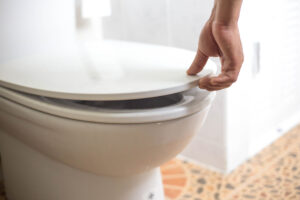
When it comes to home maintenance, certain items often escape our regular attention. One such item is the humble toilet seat. Despite its daily use, many people are unsure about how often they should replace their toilet seat. In this comprehensive guide, we will delve into the factors influencing the lifespan of a toilet seat, signs that indicate it’s time for a change, and practical tips for maintenance.
Lifespan of a Toilet Seat
The lifespan of a toilet seat can vary depending on several factors:
Material and Quality
Toilet seats are typically made from materials such as plastic, wood, or a combination of materials. High-quality seats made from durable materials tend to last longer than cheaper alternatives. For instance, wooden seats, when properly cared for, can last for many years due to their robust nature and resistance to wear and tear.
Frequency of Use
The frequency of use is another crucial factor. A toilet seat in a busy household with multiple occupants will likely wear out faster compared to one in a less frequently used bathroom. Daily use puts stress on the hinges and the seat itself, leading to gradual deterioration over time.
Maintenance and Care
Proper maintenance can significantly extend the lifespan of a toilet seat. Regular cleaning with mild soap and water helps prevent buildup of dirt and grime, which can weaken the seat material over time. Avoid using abrasive cleaners or strong chemicals, as these can cause damage and reduce the longevity of the seat.
Signs it’s Time to Replace
Despite its durability, a toilet seat will eventually reach the end of its functional life. Here are some signs that indicate it’s time for a replacement:
- Cracks or Damage: Cracks in the seat, especially around the hinges or where the seat connects to the bowl, are clear indicators that the seat needs to be replaced. Such damage compromises the structural integrity of the seat and can lead to discomfort or even accidents.
- Looseness: A seat that feels loose or wobbly despite tightening the bolts may need replacing. Over time, the holes connecting the seat to the bowl can widen due to wear, making it difficult to securely fasten the seat.
- Fading or Discoloration: Continuous exposure to cleaning agents or sunlight can cause the seat’s color to fade or change. While this may not affect functionality, it can make the bathroom look less appealing. Replacing the seat can instantly refresh the appearance of the toilet.
- Hygiene Concerns: If cleaning no longer restores the seat to a hygienic condition or if there are signs of mold or mildew that cannot be removed, replacing the seat is advisable. Hygiene is essential in a bathroom, and a worn-out seat may harbor bacteria despite cleaning efforts.
Practical Tips for Maintenance
To extend the life of your toilet seat and minimize the need for frequent replacements, follow these maintenance tips:
- Clean Regularly: Wipe down the seat and hinges regularly with a mild soap solution and water. Avoid harsh chemicals that can damage the seat material.
- Inspect Periodically: Check for signs of wear and tear such as cracks, discoloration, or looseness. Addressing these issues early can prevent further damage and prolong the seat’s lifespan.
- Adjust Hinges: If your toilet seat hinges allow for adjustment, periodically check and tighten them as necessary. Loose hinges can cause unnecessary stress on the seat and lead to premature wear.
- Choose Quality: When replacing a toilet seat, invest in a quality product made from durable materials. While initially more expensive, high-quality seats tend to last longer and offer better comfort and support.
- Consider Household Factors: If your household includes elderly individuals or individuals with mobility issues, opting for a seat that meets accessibility standards (e.g., raised height or padded) can improve comfort and durability.
Conclusion
While the lifespan of a toilet seat can vary depending on factors such as material, quality, and usage frequency, a good rule of thumb is to inspect it periodically for signs of wear and tear. By following proper maintenance practices and promptly replacing a seat when necessary, you can ensure a hygienic and comfortable bathroom experience for years to come.
Next time you wonder, “how often should a toilet seat be changed?” consider these factors and indicators to make an informed decision about when it’s time for a replacement.

